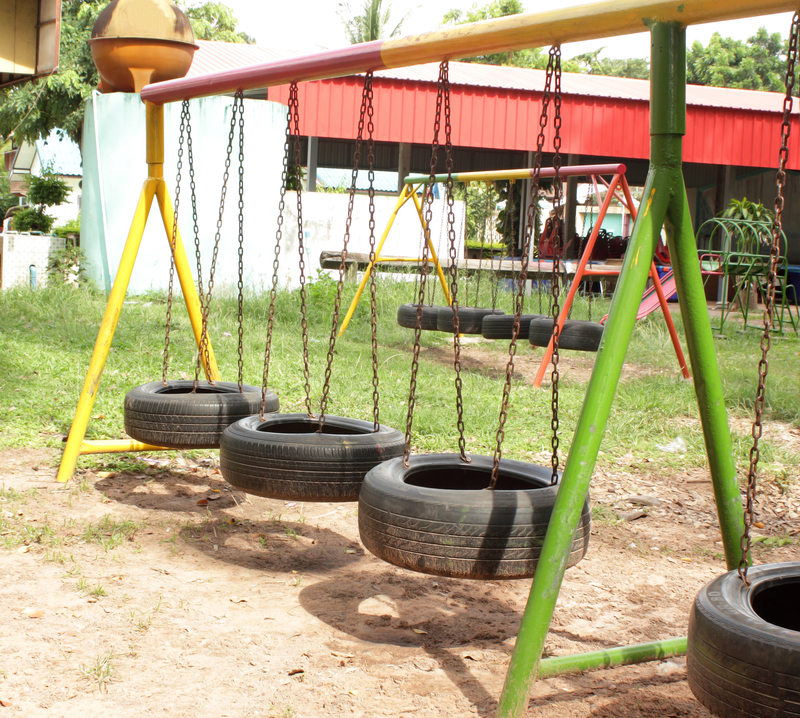Your Roadmap to Successful Clutter Removal and Hoarder Clean Up
Are you feeling overwhelmed by clutter or faced with the daunting challenge of hoarder clean up? Whether you're dealing with years of accumulated belongings or simply need a fresh start, navigating the journey from chaos to order requires patience, strategy, and understanding. In this comprehensive guide, we present your ultimate roadmap to successful clutter removal and hoarder clean up. Explore actionable tips, professional insights, and step-by-step instructions--so you can reclaim your space, restore peace of mind, and create a healthier living environment.

Understanding the Impact of Clutter and Hoarding
Clutter and hoarding can take a significant toll on both your mental and physical well-being. Cluttered spaces may lead to:
- Increased stress and anxiety
- Reduced productivity and focus
- Potential safety hazards (falls, fire risks, etc.)
- Difficulty maintaining cleanliness and hygiene
- Strained personal relationships
Hoarding goes a step further, often defined by:
- Excessive acquisition of items with difficulty discarding them
- Severely cluttered living spaces, sometimes impeding functionality
- Psychological distress and social isolation
Recognizing these challenges is the first step to creating a tailored plan for effective clutter removal and hoarder clean up.
Why Prioritize Clutter Removal and Hoarder Clean Up?
A clean and organized home is more than just aesthetically pleasing--it's essential for your health, safety, and happiness. Here's why you should make clutter removal a priority:
- Improved Air Quality: Less dust and dirt accumulates.
- Enhanced Mental Health: A tidy space reduces anxiety and promotes calm.
- Greater Efficiency: You spend less time searching for lost items.
- Better Safety: Less risk of tripping, falling, or sustaining injuries.
- Promotes Social Interaction: You'll feel comfortable inviting guests over.
An Essential Roadmap to Successful Clutter Removal and Hoarder Clean Up
If you're ready to tackle the mess, this step-by-step roadmap will guide you through clutter removal and hoarder clean up, making the process manageable and sustainable:
1. Assess and Acknowledge the Situation
Begin by objectively assessing your space. Take photographs of each room--sometimes, viewing your living area through images can provide a fresh perspective.
- Identify problem zones: List rooms or areas most in need of attention.
- Determine the root cause: Understand whether clutter is due to lack of storage, emotional attachment, or both.
- Set realistic expectations: Remember, successful clean up is a journey, not an overnight fix.
2. Build a Plan and Set SMART Goals
A successful clutter removal and hoarder clean up requires a clear plan. Use the SMART goal framework (Specific, Measurable, Achievable, Relevant, Time-bound) to break big projects into manageable tasks.
- Prioritize areas: Start with spaces most frequently used--like the kitchen or bedroom.
- Write down weekly targets: Example: "Sort kitchen drawers on Saturday morning."
- Celebrate small wins: Every bag decluttered is progress!
3. Gather Supplies and Prepare Yourself Emotionally
Preparation can make all the difference. Gather bins or bags for sorting items into categories such as keep, donate, recycle, and discard. Arm yourself with gloves, dust masks, and cleaning supplies--especially important for hoarder clean up due to potential health hazards.
- Mental preparation: You may encounter emotional attachments; take breaks as needed.
- Physical preparation: Wear old clothes, and open windows to ventilate the space.
- Support network: Consider enlisting friends, family, or a professional organizer for encouragement and objectivity.
4. Start Sorting: The Four-Box Method
Use the proven Four-Box Method for maximum efficiency:
- Keep: Only items you use, love, or truly need.
- Donate/Sell: Items in good condition, but no longer needed.
- Recycle: Paper, electronics, and materials that can be reused.
- Throw Away: Broken, damaged, or hazardous items.
Work one space at a time for added focus. Avoid the temptation to jump between rooms.
5. Deep Cleaning and Sanitization
After sorting, tackle deep cleaning:
- Wipe down all hard surfaces with disinfectant.
- Vacuum carpets and mop floors thoroughly.
- Sanitize bathrooms and kitchens--especially important in severe hoarding cases.
- Replace air filters if needed, and address any lingering odors.
Sanitization is crucial for hoarder clean up, as excessive clutter often harbors mold, pests, and bacteria.
6. Organize What's Left
Organizing is the key to maintaining a clutter-free environment. Assign every item a designated place:
- Invest in storage solutions: Use bins, shelves, and closet organizers.
- Label containers: This cuts time searching for things later.
- Create systems: For example, a "mail station" to prevent paper buildup.
- Use vertical storage: Free up floor space and maximize capacity.
7. Responsible Disposal and Donation
Proper disposal is a vital part of clutter removal and hoarder clean up:
- Contact local donation centers or charities for items in good condition.
- Dispose of hazardous waste (paint, chemicals, batteries) at appropriate facilities.
- Recycle electronics and old appliances according to community guidelines.
Ensure that your clean-up efforts have a positive impact beyond your home by minimizing landfill waste and helping your community.
8. Maintenance and Preventing Relapse
The journey doesn't end once your space is spotless. Ongoing maintenance is essential for lasting success:
- Schedule regular decluttering: Make it a monthly or seasonal habit.
- Implement the "one in, one out" rule: For every new item you bring in, remove one.
- Practice mindful shopping: Avoid impulse purchases that lead to future clutter.
- Stay accountable: Involve friends, family, or an organizer for periodic check-ins.
When to Call in the Professionals
Tackling extreme clutter or hoarder clean up can quickly become overwhelming or hazardous. Recognize when it's time to enlist expert support:
- Severe health risks: Evidence of mold, animal waste, structural damage, or infestation.
- Emotional distress: If the process triggers intense anxiety, guilt, or depression.
- Legal concerns: Risk of eviction, code violations, or child/elder neglect issues.
- Time constraints: When you need rapid results due to a move or property sale.
Professional clutter removal and hoarding remediation experts bring:
- Specialized cleaning equipment and personal protective gear
- Experience sorting, organizing, and disposing of large-scale clutter
- Sensitivity to emotional and psychological challenges
- Connections to local charities, recycling centers, and hazardous waste facilities
Addressing the Emotional Side of Clutter and Hoarding
Clutter and hoarding aren't just physical issues--they're deeply emotional. Sentimental attachments, shame, and fear of letting go can make the process challenging.
- Be patient and compassionate--especially with yourself or loved ones struggling with hoarding disorder.
- Seek support: Consider counseling or support groups (like Clutterers Anonymous or Hoarding Task Forces) to address underlying issues.
- Celebrate progress: Recognize that each item removed is a victory, no matter how small.
- Educate yourself: Learning about the psychology of hoarding can foster empathy and effective solutions.

Frequently Asked Questions (FAQs) about Clutter Removal and Hoarder Clean Up
What is the difference between clutter and hoarding?
Clutter refers to everyday mess or extra belongings that can be easily managed, while hoarding is a disorder characterized by excessive accumulation of items and inability to discard them, leading to dangerous living conditions.
How long does hoarder clean up take?
It varies based on severity. A single room may take a few days; an entire property with severe hoarding can take weeks or months. Professional intervention may expedite the process.
What are the risks involved?
Risks range from exposure to mold, pests, sharp objects, and biohazards to increased physical and emotional stress. Always assess risks before starting and use appropriate protection.
Should I throw away sentimental items?
Not necessarily. Set aside truly meaningful keepsakes, but be honest about what you're attached to. Photographs and memory boxes can help preserve special moments without keeping everything.
Can hoarder clean up be done alone?
For minor clutter, yes. For severe hoarding, professional assistance is strongly recommended for both safety and efficiency.
Conclusion: Start Your Journey to a Clutter-Free Life
Clutter removal and hoarder clean up are transformative processes. With the right mindset, methodical planning, and ongoing maintenance, you can achieve lasting results. Remember to prioritize self-care, enlist support, and celebrate your victories along the way.
Whether you're clearing excess possessions or providing a loved one with help, successful clutter removal and hoarder clean up unlocks healthier, brighter, and more welcoming spaces.
- Assess, plan, and set clear goals
- Prepare supplies and support
- Sort, clean, and organize
- Dispose and donate responsibly
- Maintain ongoing order
Ready to take back control? Start your roadmap to clutter removal and hoarder clean up today--and embrace a future where your home is a haven, not a hassle.